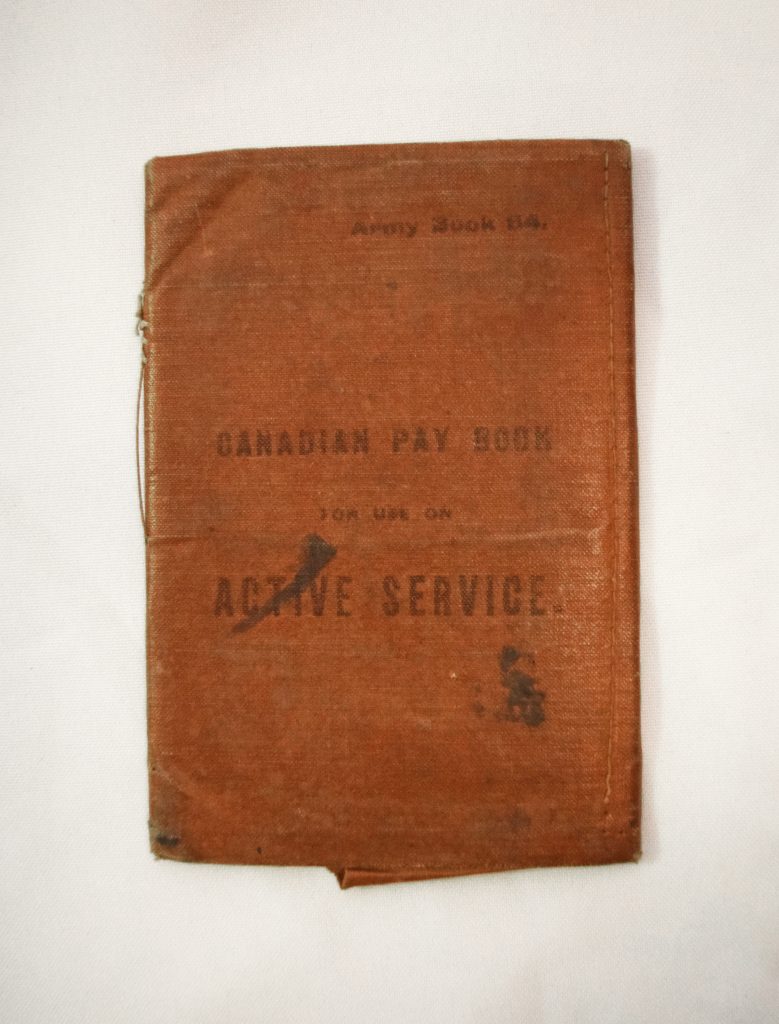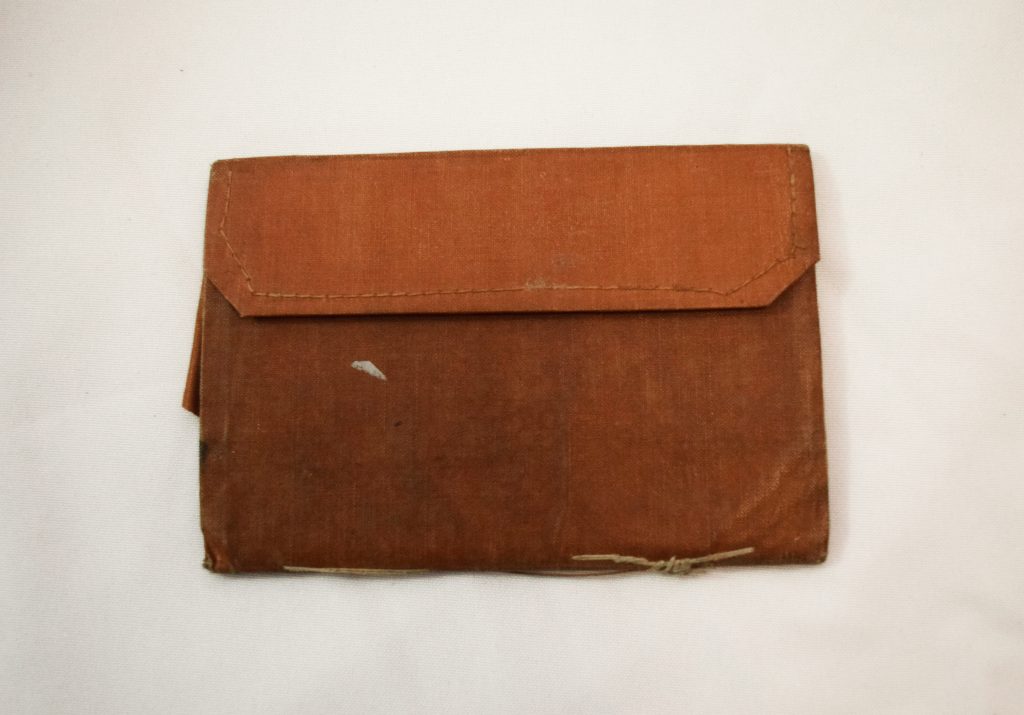This artifact is one of the most important yet unheard-of objects issued to commonwealth soldiers of the First World War. This small brown booklet was called a paybook. It was to be carried by all soldiers at all times, even on the battlefield. It served a multitude of purposes, including soldier identity for casualties and for receiving payment. It also carried a space for the recipient soldier to write his will, with examples of how to begin writing it. Rank, awards, equipment skill, charges, and next of kin were all documented in this paybook. The copy held by the Maple Ridge Museum once belonged to Private George Marlow of the 2nd Battalion Bedfordshire Regiment. It contains hand-written documents from the original owner Fred Lantz, as well as a badly damaged postcard type photo of him.
Regardless of the fact that paybooks were direct recordings of the cash soldiers were owed, it did not necessarily mean they were payed. Soldiers pay was held back in many cases, as it was seen that soldiers should not have too much money in their name upon death. Sometimes payment was held until the end of the war.
This blog was researched and written by Darren Ragoonath, Douglas College

